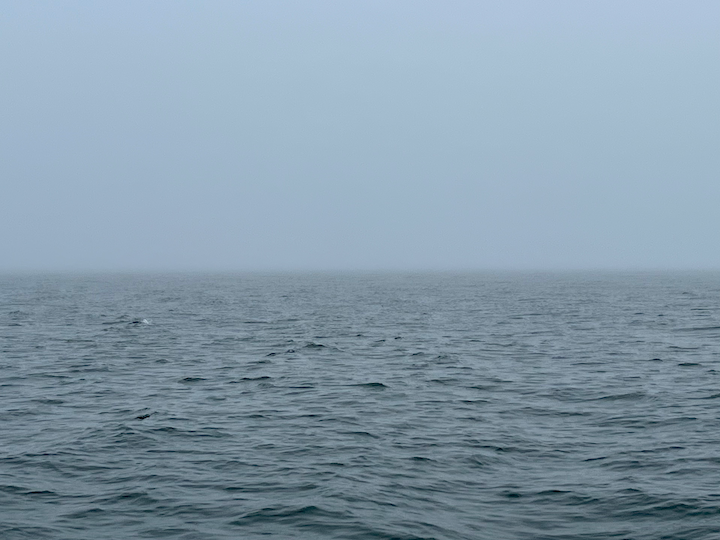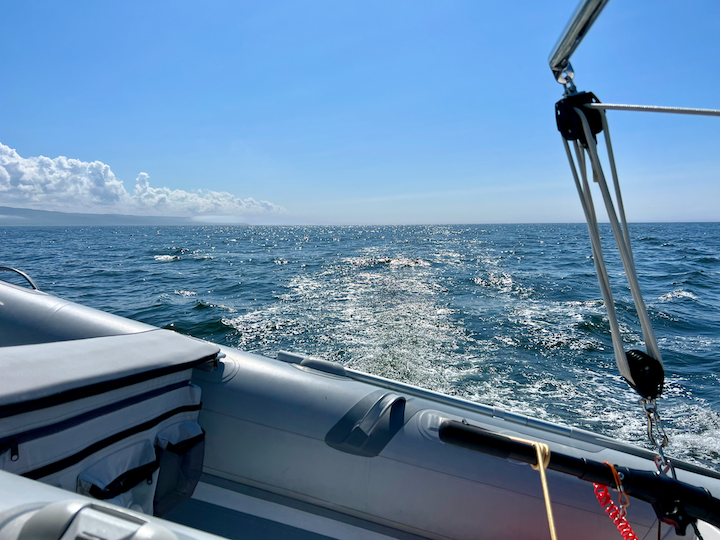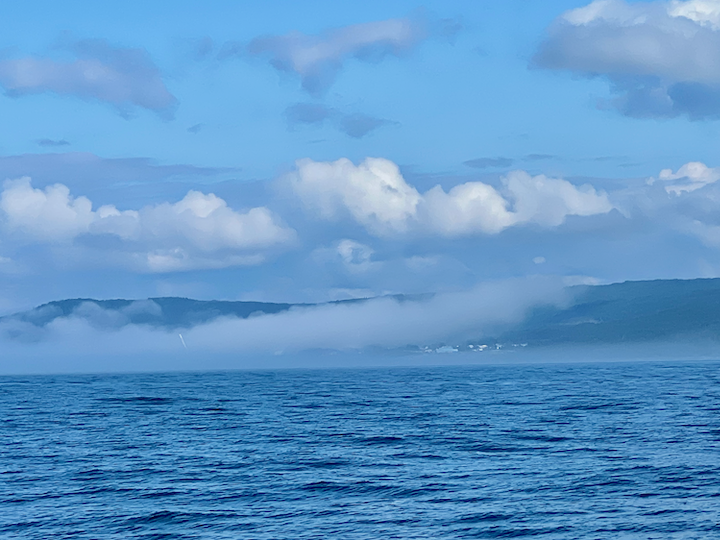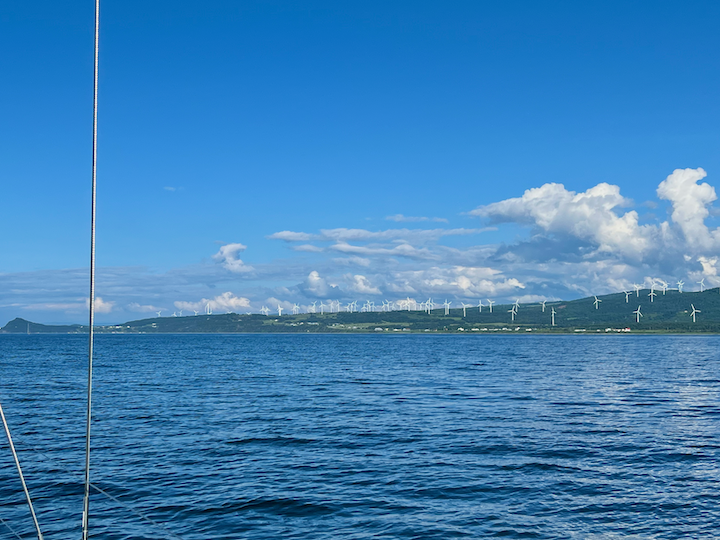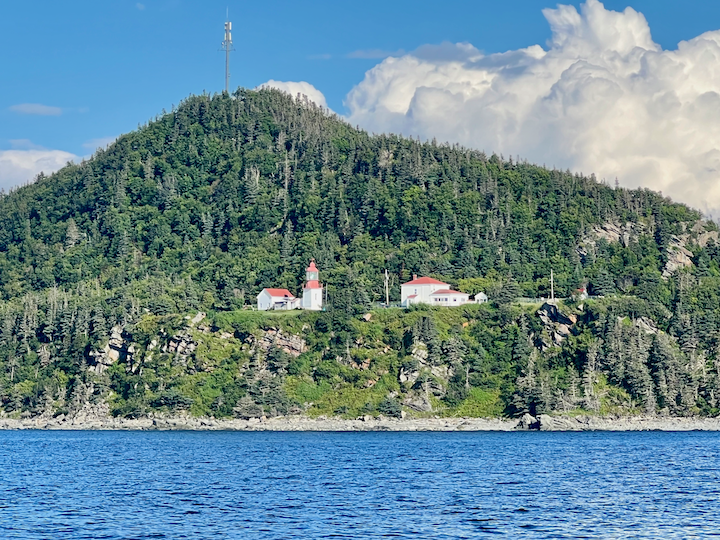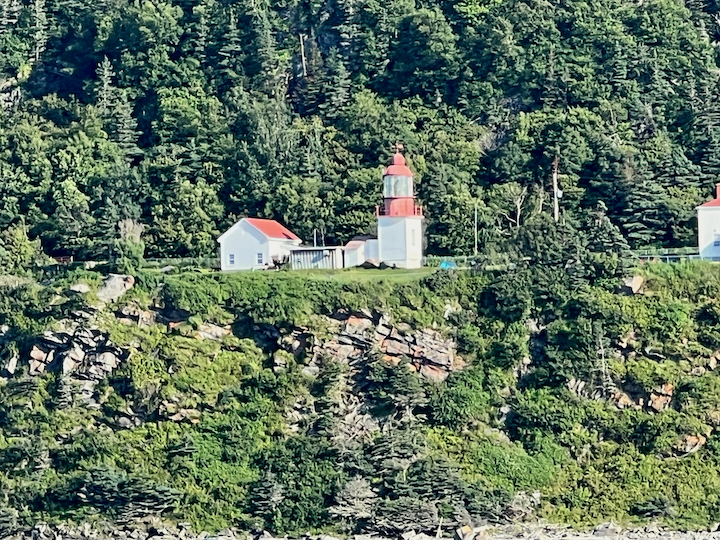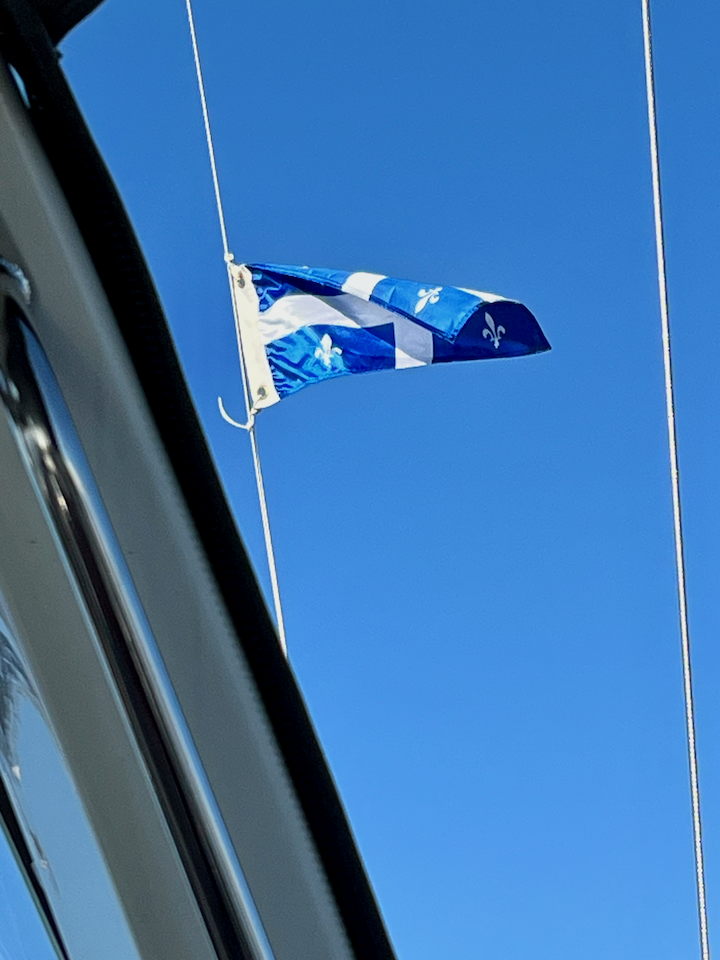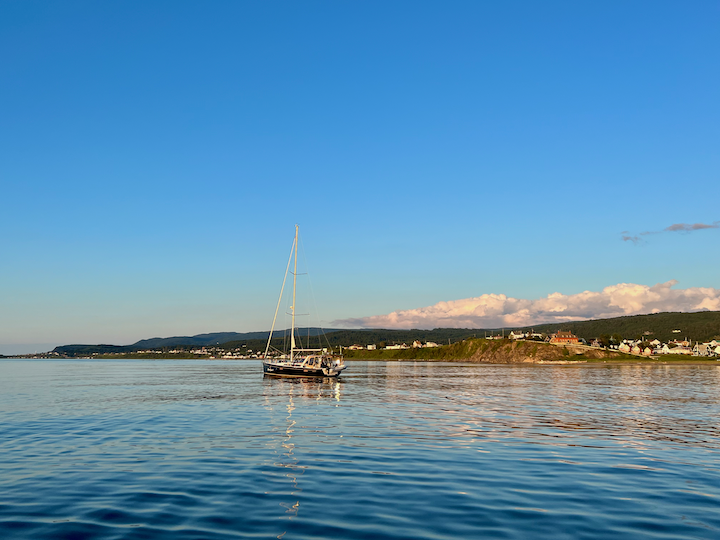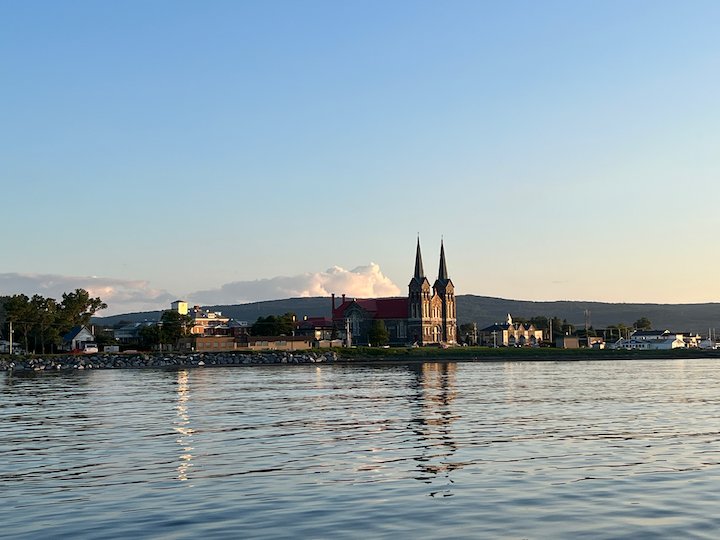It’s hard to believe, but today marks the last day of our first full month and we’re pleased to report that True North and her crew are all doing well. What’s not to like? Every day is a new adventure, with new sights, new challenges, and new people. We’ve settled into a nice rhythm, adding some predictability to a lifestyle that offers continuous surprises.
So far, we’ve been underway over 100 hours and traveled over 700 nautical miles (806 miles or 1,296 km) but we still have about 1,200 to go before we reach Portland, ME. If you do the math, you’ll observe that our daily averages are low. That’s because we spent extra days during the early part of the cruise to visit with friends, and to explore Montréal and Québec City. The pace will pick up as we have fewer acquaintances in these parts, there are fewer cities to explore until Charlottetown, PE and Halifax, NS. That said, we do plan to spend some days exploring the Gaspé Peninsula, and the Bras d’Or lakes on Cap Breton, the northern part of Nova Scotia. We also just crossed North of the 49th parallel. We’ll continue Northeast for a few more days, before starting to veer Southeast.
We left Rimouski, QC at 0700 and headed toward Matane, QC, 45 nautical miles East. We made record time thanks to an ebbing tide and following seas, so we decided to keep on going, covering 93 nautical miles until St. Anne des Monts. This was our longest hop to date and take over 12 hours. It may also explain this uncharacteristically long blog post, as there was extra time to write.
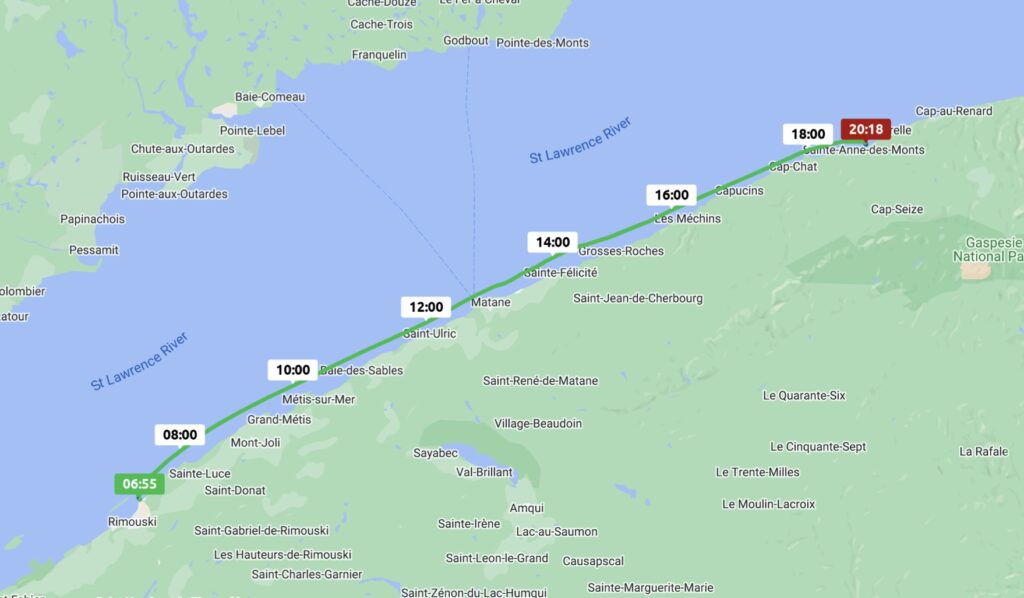
The Saint Lawrence gets wider and saltier as we enter the Gaspé region. It’s the peninsula that extends eastward into the Gulf of Saint Lawrence on the south shore. It’s aptly named from an indigenous word meaning “end of the land “. It contains the Gaspé National Park, the northern extremity of the Appalachian mountain range (Mount Jacques Cartier is the tallest Canadian Appalachian at 4,160 feet (1,268 meters). It also boasts naturally carved coastal rock formations. More on the Gaspé in the upcoming days).
As lake sailors (Great Lakes, Lake Geneva) we have not cruised much on salt water. But other than ad hoc experiences, this is our first extended salt water cruise. What’s interesting about the Down East Circle Route is that it eases you through the transition, starting with fresh water, progressing through brackish water and ending with salt water.
Great Lakes sailors like to boast about how their boats have never been in salt water. Fresh water is certainly easier on the gear but, despite our conviction that True North would rust and disintegrate upon her first salt water encounter, we’re pleased to report that she’s handling it just fine. She was built for the ocean and, while the stainless steel may not be as shiny after the cruise, and some engine parts will need to be replaced sooner, it’s a trade off we gladly made to be able to experience this.
The next big change is tides. As we continue East the tides are increasingly a factor. They are particularly challenging between Montréal and Rimouski because they interact with the narrowest part of the river, creating very strong currents. And if you think the currents are synchronized with the tide, think again. Calculating the net effect of river and tidal currents requires a 130 page almanac published by the Canadian Hydrographic Service! Practically speaking, travel needs to be scheduled to take advantage of favorable currents. And if done right, it gives you amazing speed over ground. Our record is over 13 knots. Not bad for a boat whose hull speed is just over 7 knots.
As we approach the ocean, fog is increasingly a concern. There’s hardly a day without thick fog banks with visibility sometimes reduced to a few boat lengths. This requires tremendous caution and vigilance, using radar, AIS, charts and fog horn. We’re now glad we ordered the fog horn option on True North. It automatically sounds the appropriate fog signals every two minutes (one prolonged blast under motor, one prolonged and two short blasts under sail).
Other than salt, tides and fog, another new experience is sea life. One is in frequent contact with the plethora of species of sea mammals and birds. Finally, waves are different on the ocean. This is a welcome change. The Great Lakes are notorious for short waves coming from every which direction and with unpredictable size and frequency. So far, the waves as we approach the Gulf of St. Lawrence are regular, smoother swells, which are a lot easier to handle.
